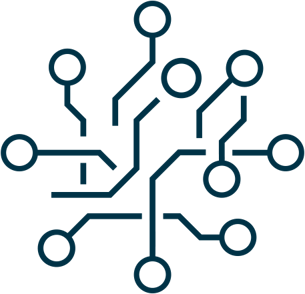Cyberattacks worldwide could cost businesses a total of $10.5 trillion annually by 2025.1 As cyber threats continue to grow in sophistication and frequency, businesses that rely on cloud infrastructure need to adopt robust cloud security measures to protect their cloud assets. Cyberattacks have become more frequent, sophisticated and potentially devastating. A single breach can lead to significant financial losses, reputational damage and regulatory penalties. To mitigate these risks, organizations must adopt a proactive approach to security and continuous security monitoring (CSM) emerges as a critical component to maintain operational resilience.
Key Components of Continuous Security Monitoring
Continuous security monitoring involves the ongoing assessment of an organization's security posture to identify and respond to threats in real-time. This involves several key components:
-
Real-time Threat Detection
- Intrusion Detection/Prevention Systems (IDS/IPS): Detect and prevent suspicious network activity.
- Security Information and Event Management (SIEM): Correlate security events for threat identification.
- Endpoint Detection and Response (EDR): Monitor and protect devices from threats.
- Log Analysis: Examine system logs for signs of compromise.
- Network Traffic Analysis: Detect anomalies and suspicious activity.
- Alerting Systems: Notify security teams promptly and prioritize alerts based on severity.
- Threat Hunting: Proactively searching for threats beyond those detected by standard security tools, using techniques like:
- Behavioral analytics: Analyze user and entity behavior to identify deviations from normal patterns.
- Threat intelligence: Leverage information from external sources (e.g., threat intelligence feeds) to stay informed about emerging threats.
- Advanced analytics: Employ techniques like machine learning and artificial intelligence to identify hidden threats.
2. Automated Incident Response
- Orchestration: Coordinate automated responses across multiple systems for streamlined incident handling. This includes:
- Playbooks: Predefined workflows for specific threats.
- Automation Tools: Automate tasks like isolating infected systems and restoring backups.
- Remediation: Automatically neutralize threats by quarantining infected systems, blocking malicious IP addresses, and restoring systems from backups.
- Different types of automated responses: Examples include:
- Isolation: Separating infected systems from the network.
- Containment: Limiting the spread of the attack.
- Eradication: Removing the threat from the environment.
- Rollback: Reversing changes made by the attacker.
3. Integration with Existing Tools
- SIEM Systems: Integrate CSM with SIEM solutions to correlate security events and gain a comprehensive view of the security landscape.
- Endpoint Detection and Response (EDR): Combine CSM with EDR to monitor and protect endpoints from threats.
- Cloud Access Security Brokers (CASBs): Secure cloud applications and data.
- Cloud Workload Protection Platforms (CWPPs): Protect workloads running in the cloud.
4. Continuous Compliance Monitoring
- Compliance Reporting: Generate automated reports to ensure adherence to regulatory requirements and industry standards.
- Policy Enforcement: Continuously monitor for compliance with internal security policies and procedures.
- Audit Trail: Maintain a detailed record of security events and actions to facilitate audits and investigations.
5. Panoramic View of Your Cloud Environment
- Multi-Cloud Security: Manage security across multiple cloud providers, ensuring consistent protection.
- Hybrid Environment Security: Integrate on-premises and cloud monitoring to provide a comprehensive view of the security landscape.
Advanced Threat Detection Techniques
To enhance threat detection capabilities, organizations can leverage advanced techniques such as:
- Machine Learning and AI: Applying machine learning algorithms to:
- Identify patterns and anomalies in network traffic, user behavior and system logs.
- Detect unusual activity that may indicate a threat.
- Continuously learn and adapt to new threats.
Learn more about how AI is transforming cloud security with advanced threat detection.
- Behavioral Analytics: Analyzing normal vs. abnormal behavior to detect deviations that may indicate malicious activity. This includes:
- User behavior analysis: Monitoring user activity for unusual patterns or unauthorized access.
- Entity behavior analysis: Analyzing the behavior of network devices, applications and other entities for anomalies.
- Threat Intelligence Feeds: Consuming real-time threat intelligence from various sources to stay informed about emerging threats. This includes:
- Open-source intelligence: Gathering information from publicly available sources.
- Commercial threat intelligence: Subscribing to paid services that provide curated threat intelligence.
- Internal threat intelligence: Collecting and analyzing threat data within the organization.
Best Practices for Implementing Continuous Security Monitoring

To effectively implement CSM, organizations should follow these best practices:
- Establish a Baseline: Define normal activity in your cloud environment to identify deviations. This involves data collection, behavioral pattern identification, and data normalization.
- Regular Updates and Patching: Keep systems and software up-to-date with patch management processes, update schedules, and vulnerability scanning.
- Periodic Security Audits: Conduct internal and external audits and penetration testing to identify and mitigate risks.
- Automated Monitoring and Alerting: Implement automated systems with proper alert configuration and 24/7 monitoring.
- Develop Incident Response Playbooks: Create detailed playbooks to guide security teams during incidents.
Overcoming Key Challenges in Continuous Security Monitoring
Implementing CSM can present several challenges, including:
- Complexity of Cloud Environments: Address the challenges of hybrid and multi-cloud environments, as well as containerized applications.
- Minimizing False Positives: Leverage AI/ML and human oversight to ensure accurate threat detection.
- Balancing Security and Performance: Use performance monitoring and optimize security controls to minimize performance impact.
Tools and Technologies for Continuous Monitoring

A variety of tools and technologies can be used to implement CSM, including:
- SIEM Solutions
- Network Security Monitoring (NSM)
- Cloud Access Security Brokers (CASBs)
- Cloud Workload Protection Platforms (CWPPs)
- Security Orchestration, Automation and Response (SOAR)
- Data Loss Prevention (DLP)
Role of Managed Security Service Providers (MSSPs)
MSSPs can offer valuable assistance in implementing and managing CSM programs. They provide:
- 24/7 Monitoring: Ensuring round-the-clock security monitoring.
- Expertise: Access to specialized knowledge and skills.
- Cost Efficiency: Balancing the costs of in-house vs. outsourced monitoring.
- Scalability: Adapting to the changing needs of the organization.
In conclusion, CSM is essential for protecting cloud environments from the ever-evolving threat landscape. By implementing effective CSM strategies, organizations can proactively detect and respond to threats, reduce the risk of data breaches and maintain a strong security posture. By following the best practices outlined in this article and leveraging the available tools and technologies, organizations can effectively implement CSM and protect their valuable assets.
Additionally, partnering with a reputable cloud security consulting firm can provide organizations with the expertise and resources needed to implement and manage effective CSM programs. Contact Adnovum’s team of cloud security experts today to protect your cloud environments from threats.
📩 Sign up for our newsletter and gain access to exclusive executive insights and event invitations.
Reference:
1. eSentire. (2023). 2023 Official Cybercrime Report.




